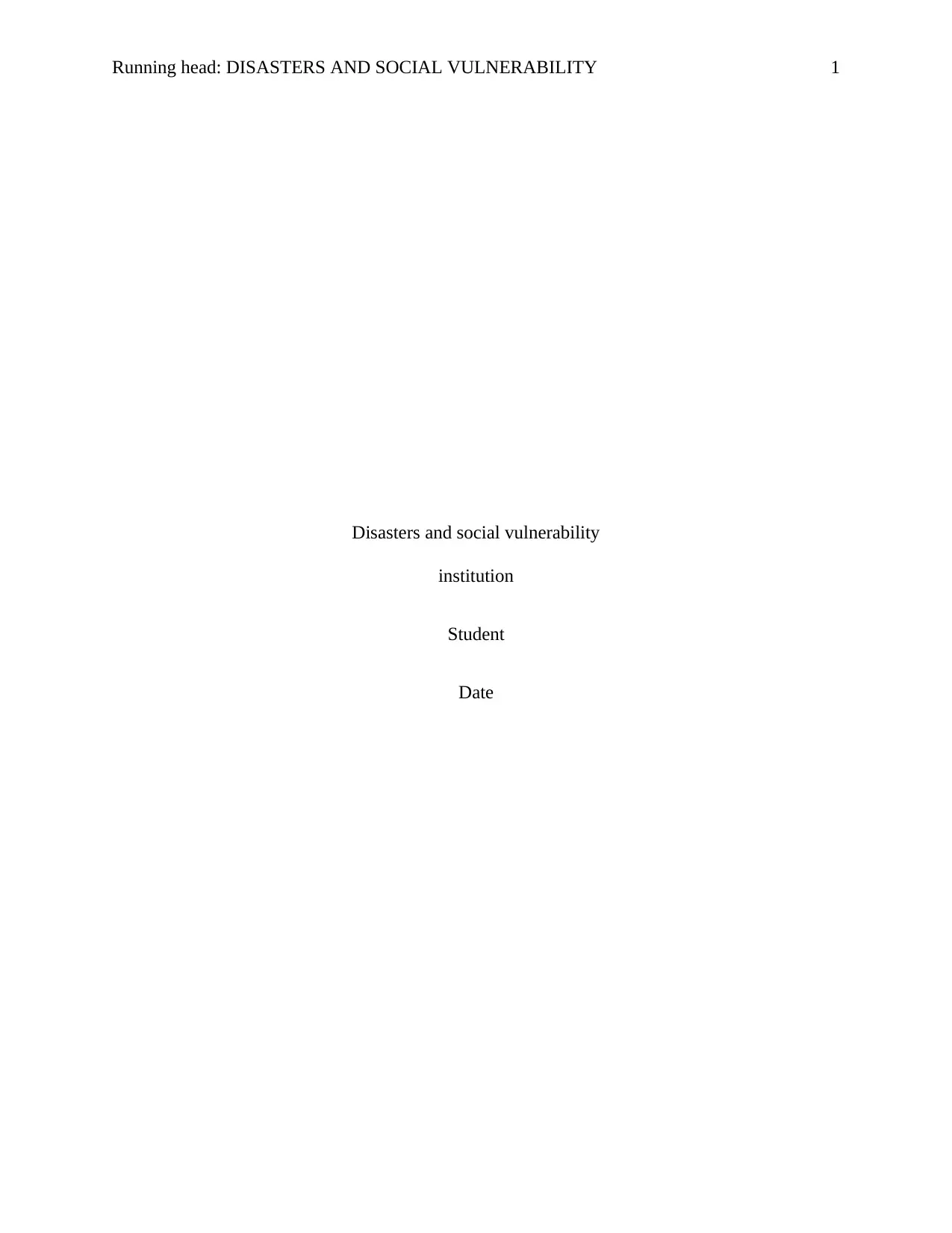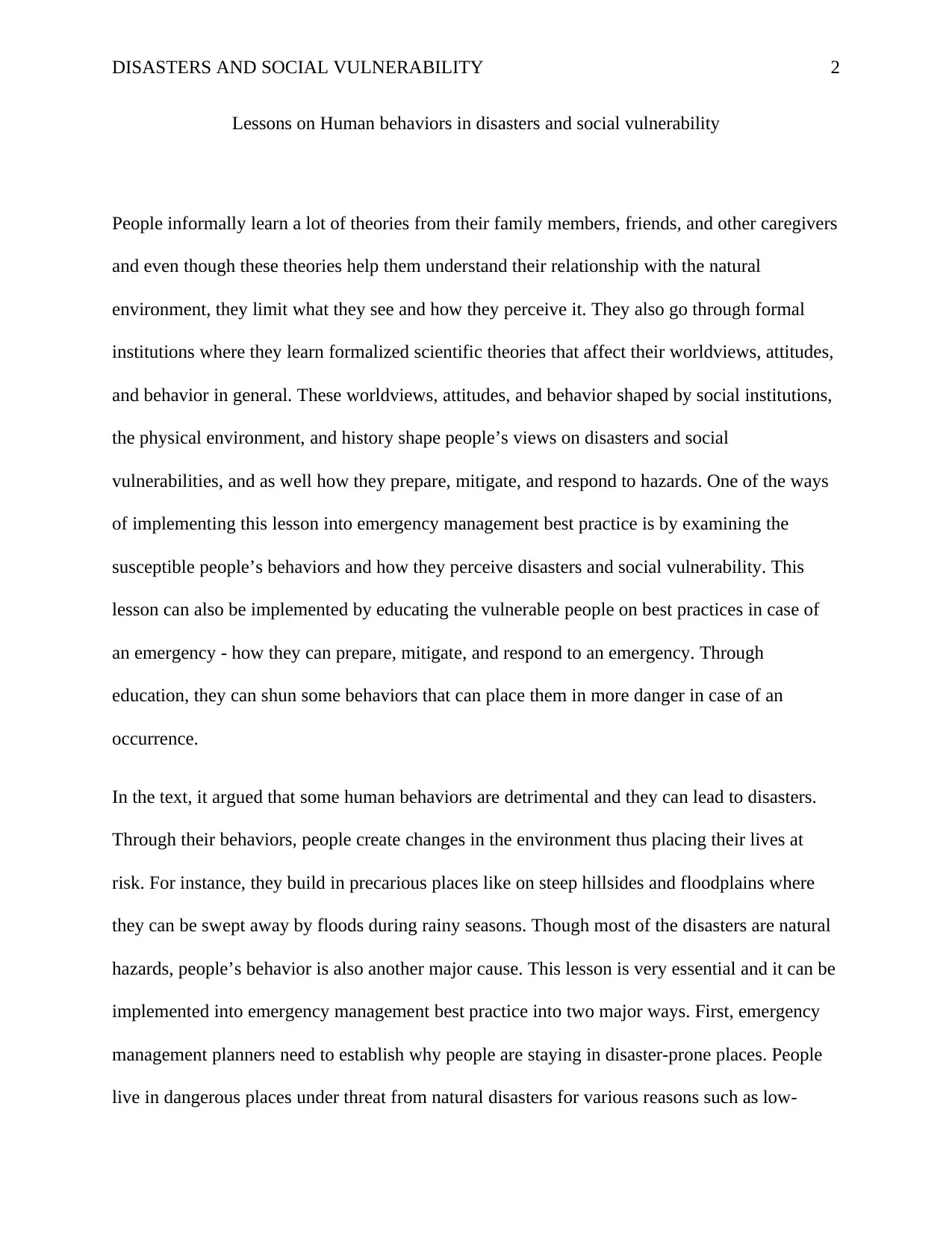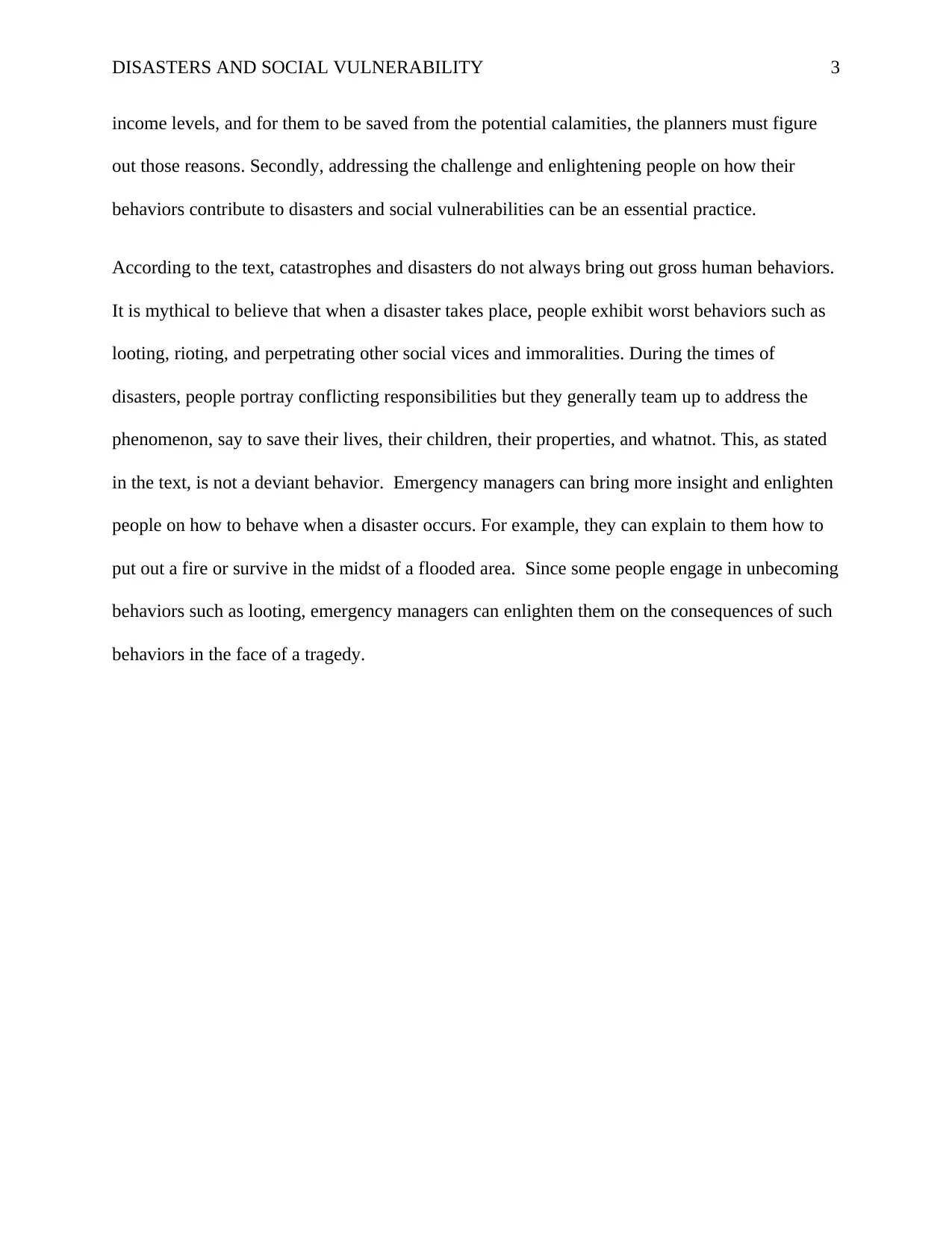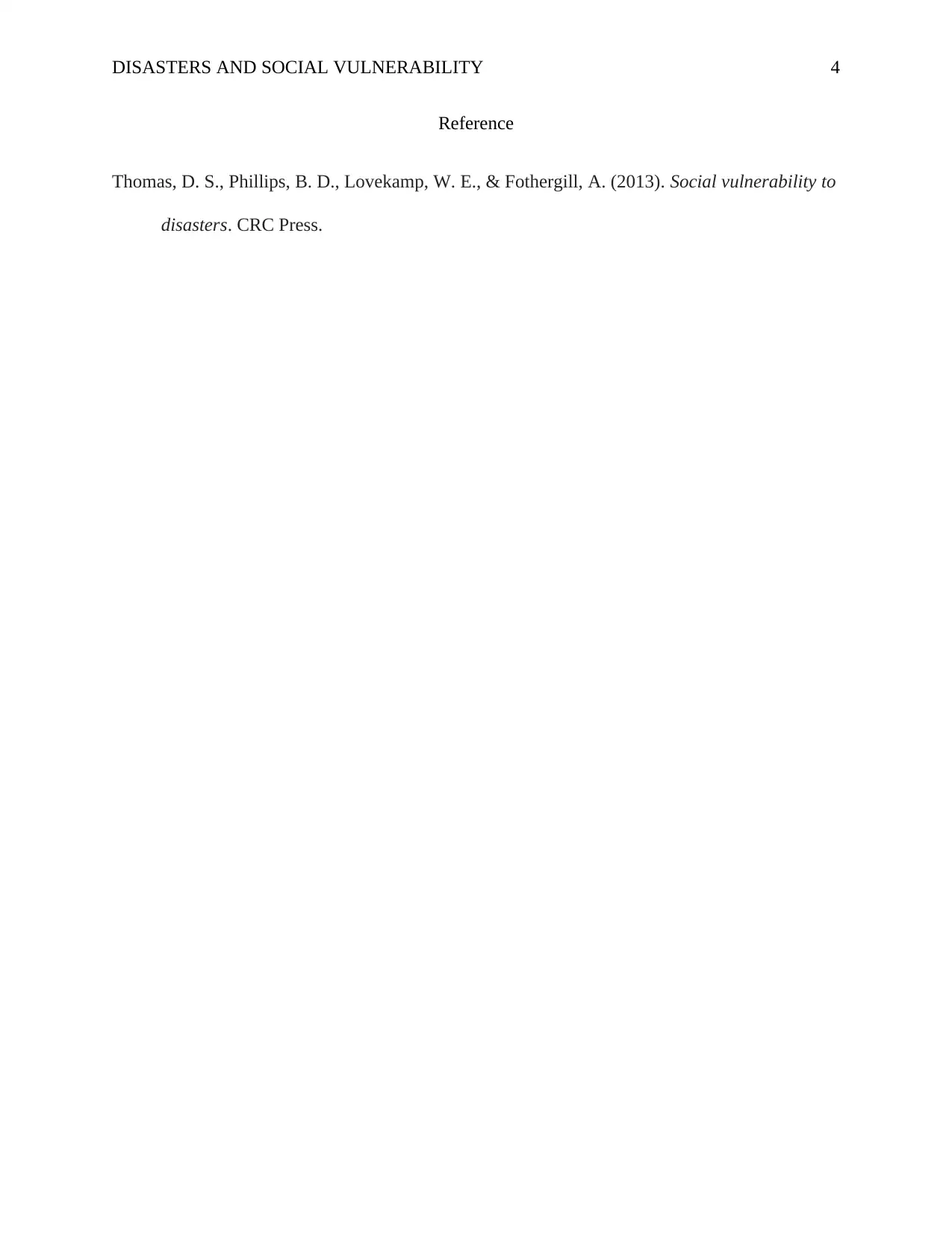Analyzing Human Behaviors in Disasters and Social Vulnerability Report
VerifiedAdded on 2022/09/16
|4
|602
|14
Report
AI Summary
This report delves into the complex interplay between human behaviors, social vulnerability, and disaster management. It examines how individual and societal actions, shaped by factors like social institutions and personal experiences, influence disaster preparedness, mitigation, and response. The report highlights the importance of understanding why people reside in disaster-prone areas, often due to economic constraints, and the need to educate them on mitigating risks. It also challenges the misconception of widespread negative behaviors during disasters, emphasizing the collaborative spirit that often emerges. The report provides valuable insights for emergency managers, emphasizing the need to address the root causes of vulnerability and to educate the public on appropriate behaviors during and after disasters, including the consequences of actions like looting. The report uses the provided text to explain the role of human behavior in natural disasters. The report discusses the importance of education and practical training in emergency management.
1 out of 4











![[object Object]](/_next/static/media/star-bottom.7253800d.svg)